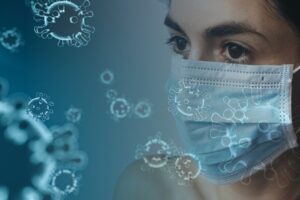Verrica Pharmaceuticals announced the presentation of positive data from a post-hoc pooled analysis of the pivotal Phase 3 CAMP trials evaluating the safety and efficacy of VP-102 (cantharidin 0.7% topical solution), Verrica’s lead product candidate for the treatment of molluscum contagiosum (molluscum).

Verrica Pharmaceuticals announces presentation of positive data from new pooled analysis of phase 3 CAMP trials of VP-102. (Credit: PublicDomainPictures from Pixabay)
Subscribe to our email newsletter
The new analysis showed that the percentage of patients with complete clearance of all lesions was statistically significantly higher in the VP-102 group than vehicle, across all body regions. Results from this analysis are being presented in a poster on January 18th-22nd at the 17th Annual Winter Clinical Dermatology Conference in Kohala Coast, Hawaii.
“The results of this study are important, as they suggest that this investigational molluscum treatment can potentially bring about complete clearance, regardless of where on the body the lesion is located,” said Lawrence Eichenfield, MD, Chief of Pediatric and Adolescent Dermatology, Rady Children’s Hospital, San Diego, CA, and principal investigator of the VP-102 Phase 3 molluscum program. “If approved, VP-102 may potentially be an important option for physicians, as they can have the option to treat even the most sensitive areas, including the groin, head, and neck.”
In this analysis of the CAMP studies, the intent-to-treat (ITT) patient population had molluscum lesions in specific areas at baseline, including: head/neck (n=77 VP-102, n=53 vehicle); chest/abdomen (n=142, 118); back/buttocks (n=117, 91); groin (n=28, 25); upper extremities (n=179, 131); and lower extremities (n=186, 141). Efficacy was measured by the percentage of subjects with complete clearance of lesions in each location by visit. Data demonstrated a statistically significantly greater percentage of complete lesion clearance by the end of the study (Day 84) across all body regions analyzed among patients receiving VP-102, as compared to vehicle. Specific results showed:
- Head/Neck: 81.8% of patients in the VP-102 group experienced complete clearance vs. 39.6% with vehicle (p<0.0001)
- Chest/Abdomen: 71.1% of patients in the VP-102 group experienced complete clearance vs. 37.3% with vehicle (p<0.0001)
- Back/Buttocks: 75.2% of patients in the VP-102 group experienced complete clearance vs. 35.4% with vehicle (p<0.0001)
- Groin: 85.7% of patients in the VP-102 group experienced complete clearance vs. 52% with vehicle (p=0.0076)
- Upper Extremities: 66.5% of patients in the VP-102 group experienced complete clearance vs. 33.6% with vehicle (p<0.0001)
- Lower Extremities: 64% of patients in the VP-102 group experienced complete clearance vs. 33.3% with vehicle (p<0.0001)
- All Areas: 50% of patients in the VP-102 group experienced complete clearance vs. 15.6% with vehicle (p<0.0001)
In the study, VP-102 safety results demonstrated similar adverse event rates across all body regions. Incidence of application site Treatment Emergent Adverse Events (TEAEs) were evaluated based on the pre-specified subset of application site reactions reported during or after Treatment Visit 1 and before Visit 2. The most common TEAEs included application site vesicles, pain, pruritus, scab, erythema, dryness, discoloration, and edema.
Source: Company Press Release
 Advertise With UsAdvertise on our extensive network of industry websites and newsletters.
Advertise With UsAdvertise on our extensive network of industry websites and newsletters.
 Get the PBR newsletterSign up to our free email to get all the latest PBR
news.
Get the PBR newsletterSign up to our free email to get all the latest PBR
news.

